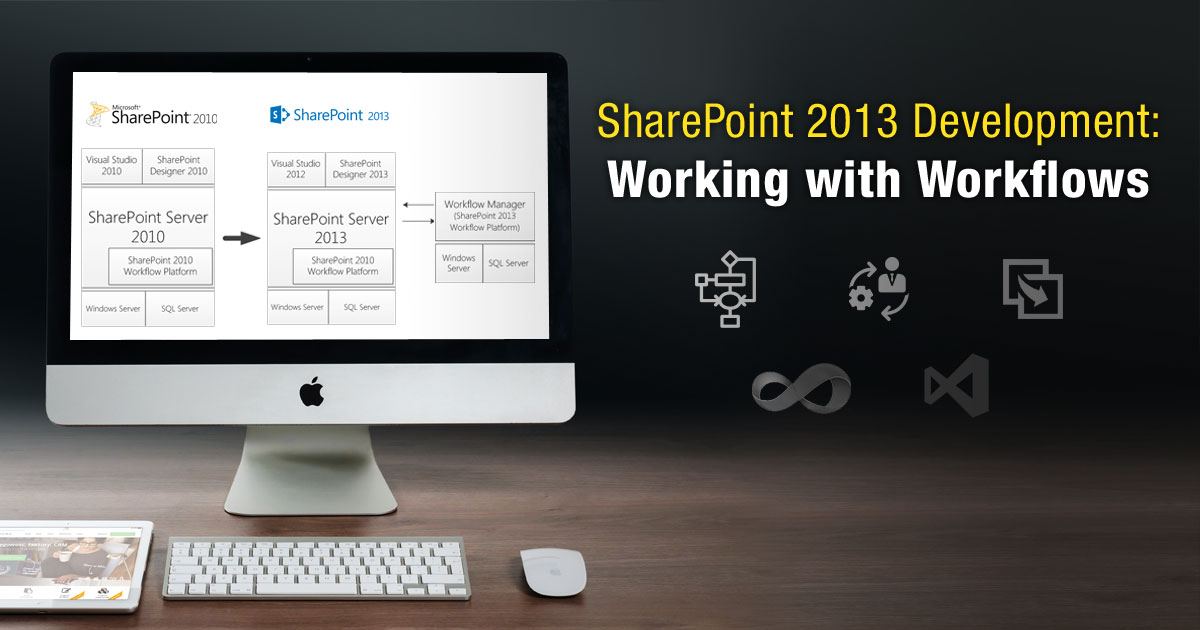The latest release of Microsoft's SharePoint platform brings about some big changes to better support collaborative development, big data management, mobile users, and public-facing websites. SharePoint 2013 has a major overhaul in Workflows with new functionalities and significant enhancements that make it easier to automate business processes. Now Workflows can be created for virtually all business processes, from simple to extremely complex.
In SharePoint 2013, you get your choice between two Workflow platforms, the older 2010 Workflow platform that is available when the basic SharePoint 2013 is installed, or the 2013 Workflow platform that becomes available when the Workflow Manager Service is installed and configured.

The 2013 Workflow platform introduces a number of new and improved features:
- Integrated Visio designer that adds a visual workflow development experience using a Visio 2013 add-in. Developers can now easily switch between design to sentence-style mode.
- The ability to enable no-code web service calls from within a workflow.
- New actions for creating a task and starting a task process.
- REST Web Service and Service Bus Messaging
- New workflow building blocks, such as Stage, Loop, and App Step.
- New Dictionary type
- Actions that allow you to start a workflow built on the SharePoint 2010 workflow platform from a workflow built on the 2013 platform.
- Workflow Manager is a new service that is external to SharePoint 2013 and is suited for the Enterprise level features introduced in the 2013 Workflow.
- PowerShell is now used exclusively when you manage and monitor the Workflow Manager
Workflow Manager Capabilities
Workflows built using the new class of workflow, Workflow Manager, have a number of interesting enterprise features, including:
- High Density and Multi-Tenancy
- Elastic Scale
- Workflow Artifact Management
- Instance Management
- Fully Declarative Authoring
- Managing Service Reliability
Simplified Workflow Migration from SharePoint 2010 to 2013
With the new upgraded workflow features in SharePoint 2013, you may be considering upgrading your older 2010 workflows to the new platform. Before doing this, you should consider the old adage, “if it ain’t broke, don’t fix it.” It’s probably best to first consider if 2013 workflows will offer any benefits on current workflows.
If you do choose to upgrade, you should first upgrade, install, and configure the Workflow Manager. SharePoint 2013 includes the SharePoint 2010 workflow, but you should be wary of any legacy elements in that workflow. Consider this article from Dan Holmes in which he explains the process of migrating from SharePoint 2010 to 2013.
Alternatively, you can use some third party tools to simplify migration, such as Nintex and K2.
One other method for migration is to use Visual Studio 2012. To do this,
- Step 1 - First verify the GAC location for SharePoint 2010 and 2013.
- Step 2 - Modify the .csproj file so that the framework version is v4.5 and the Office version is 15.0.
- Step 3 - Modify the package designer so the SharePoint Product Version is 15.0.
- Step 4 - Reload the project and verify the references to SP 15 API. Finally, just add the business logic to Web Services.
Have you experienced significant benefits from using workflows in SharePoint 2013 that were unavailable in SharePoint 2010? How did you decide what workflows were worth migrating to 2013? We would love to discuss your experience in creating SharePoint workflows.



